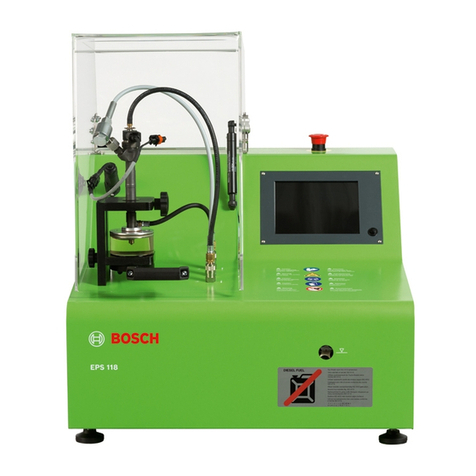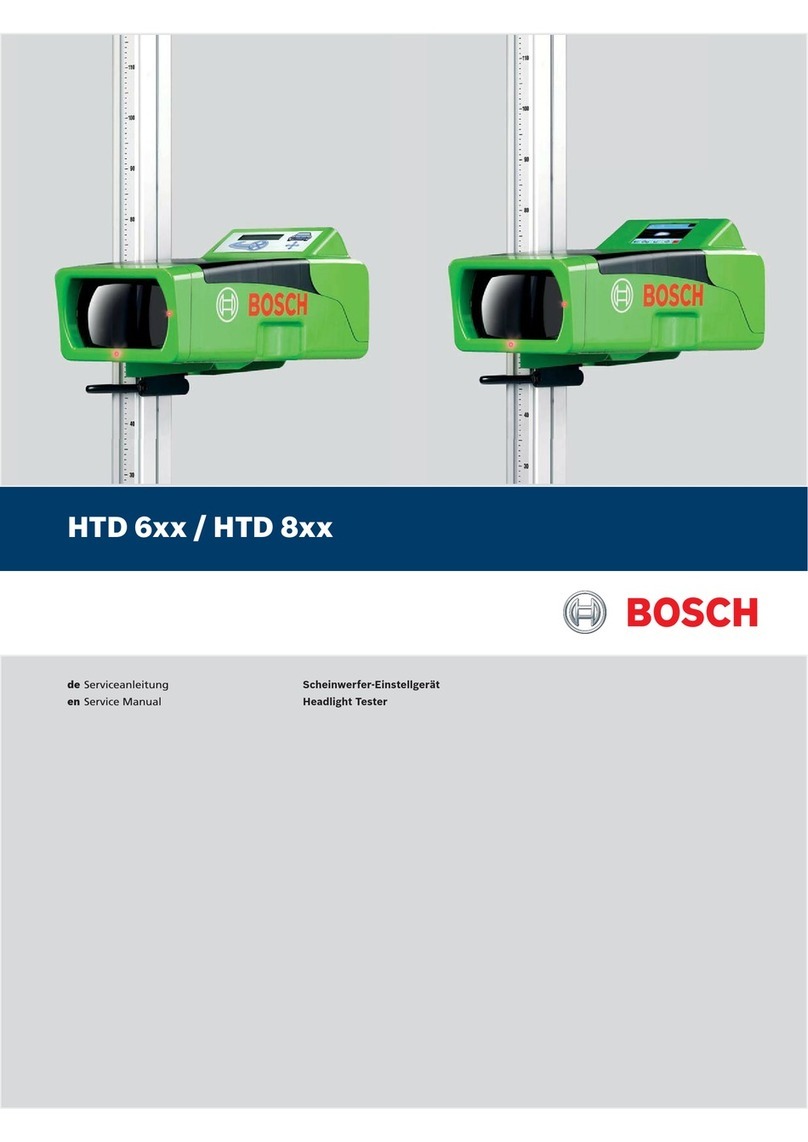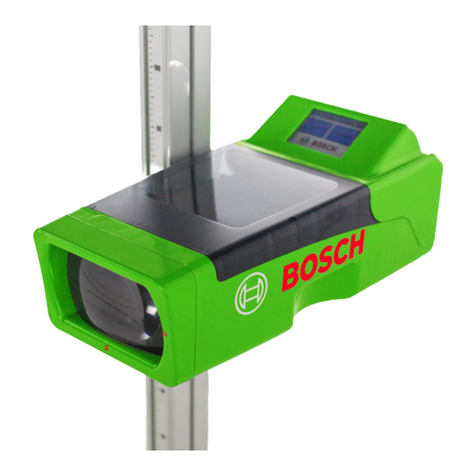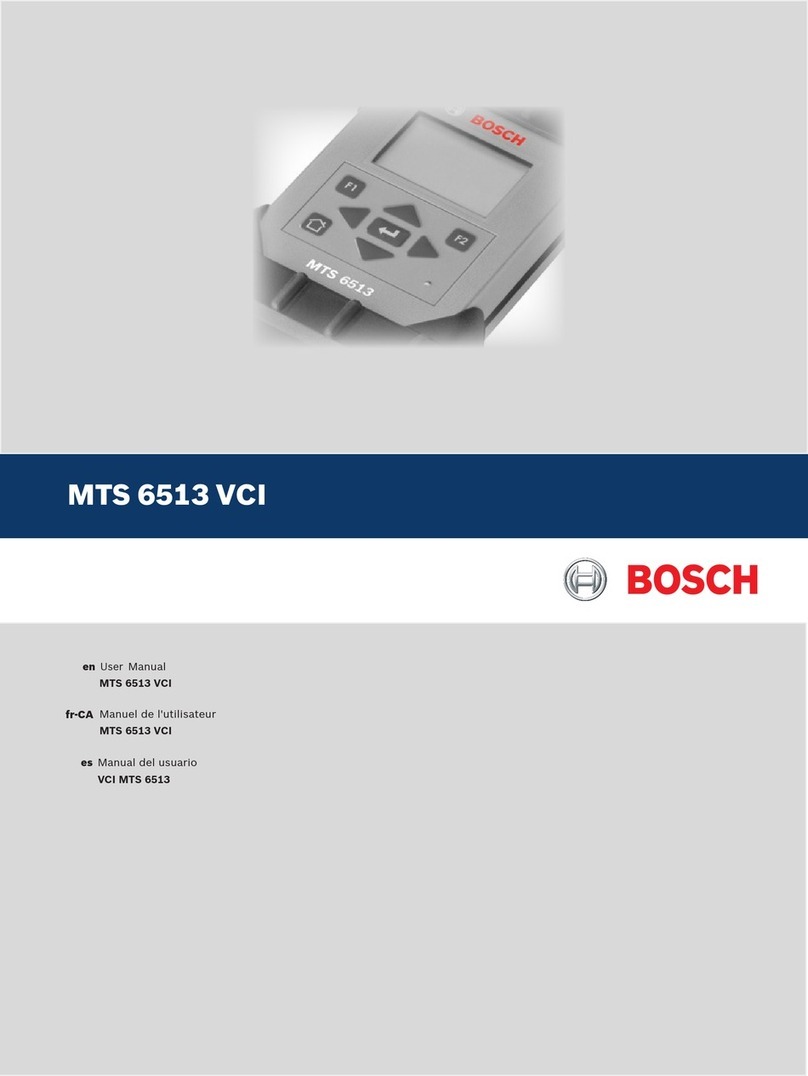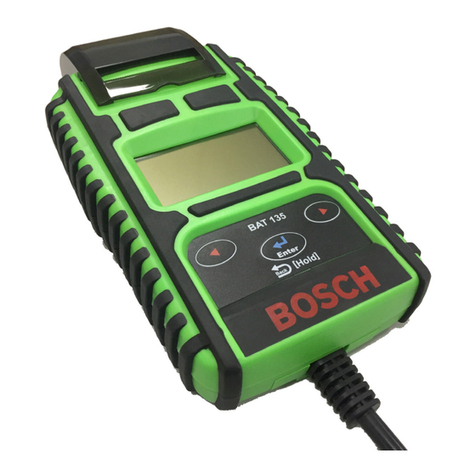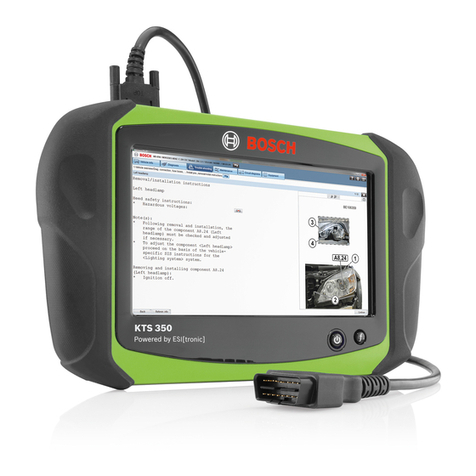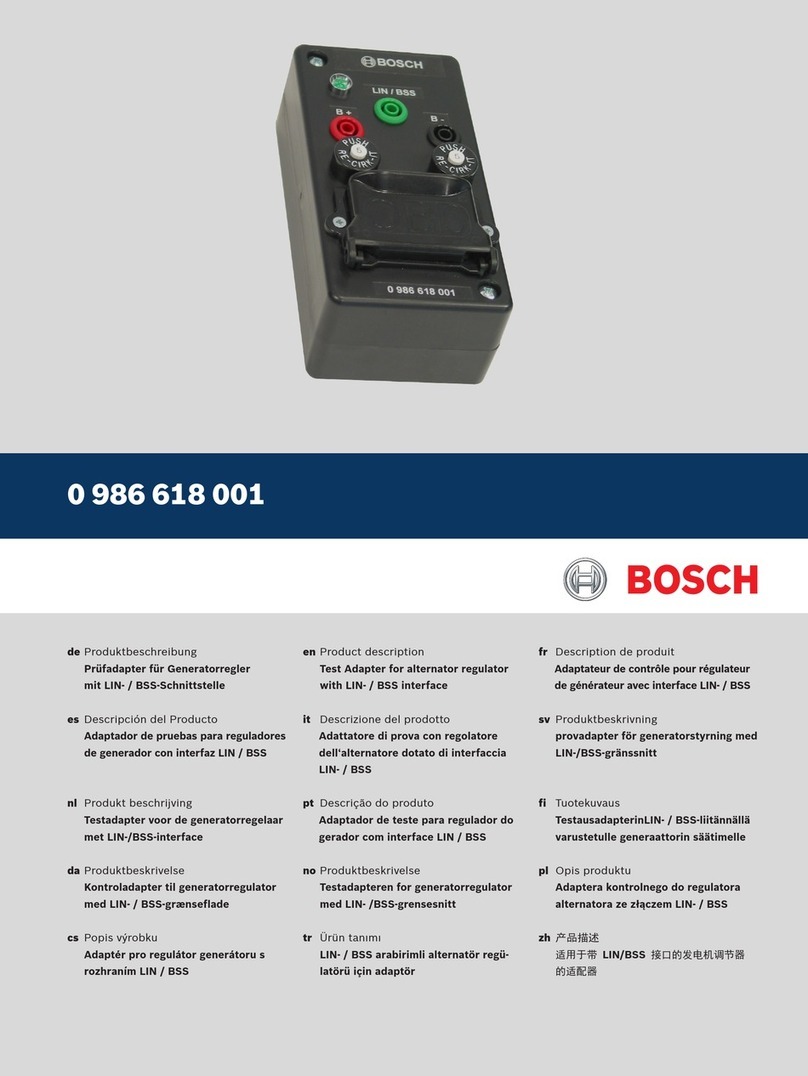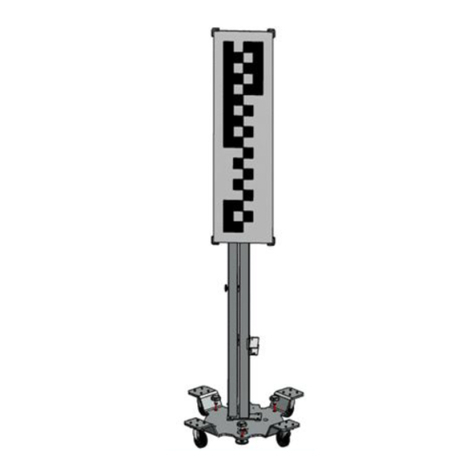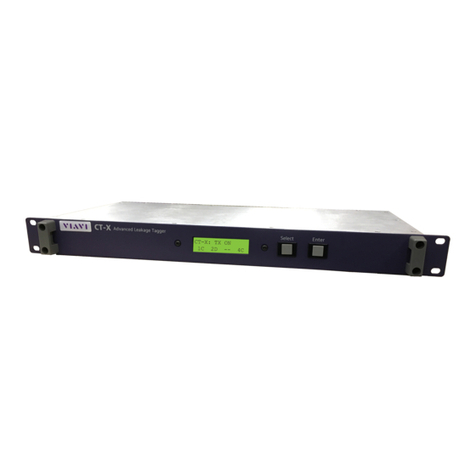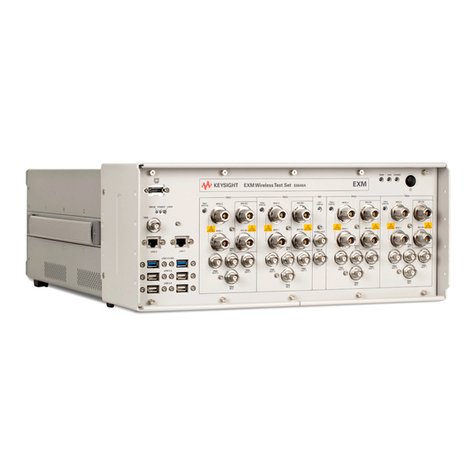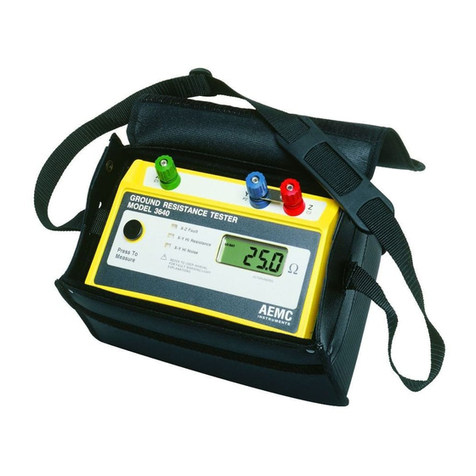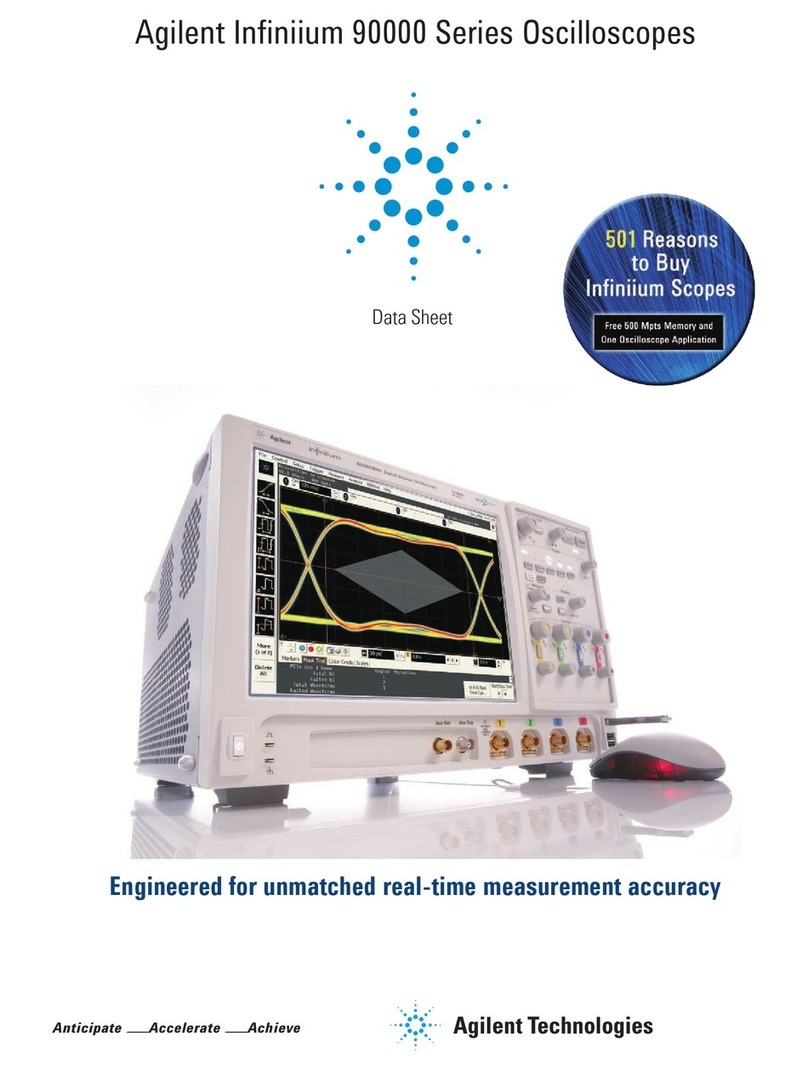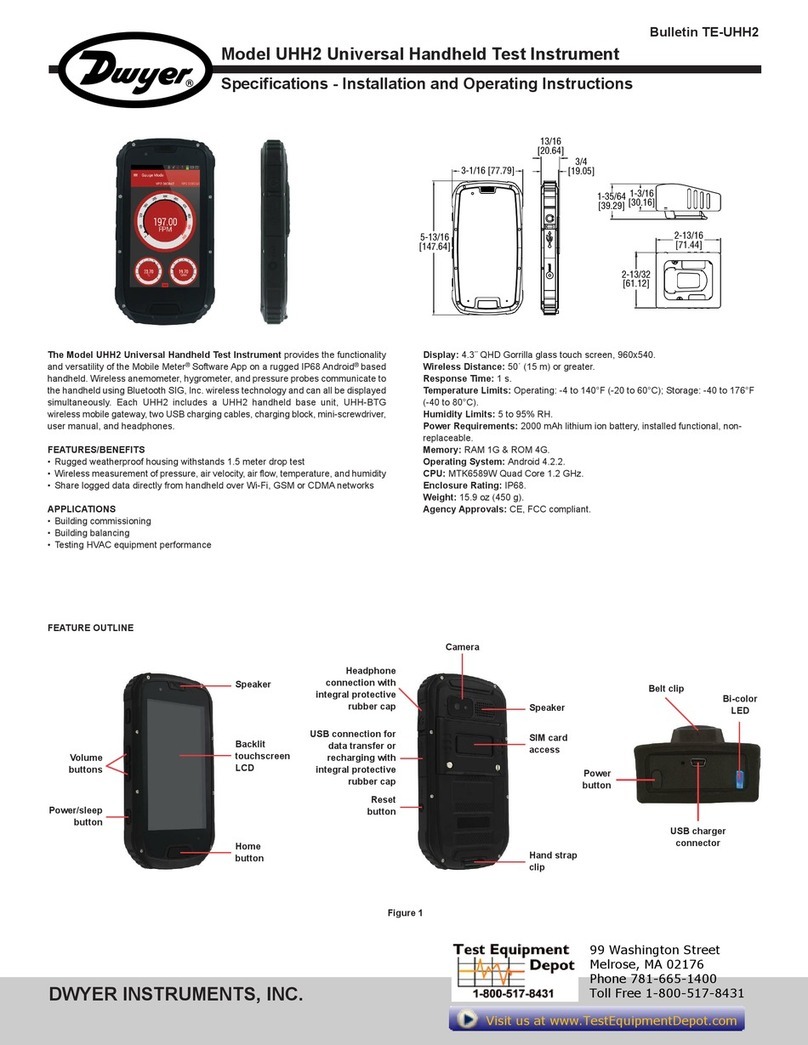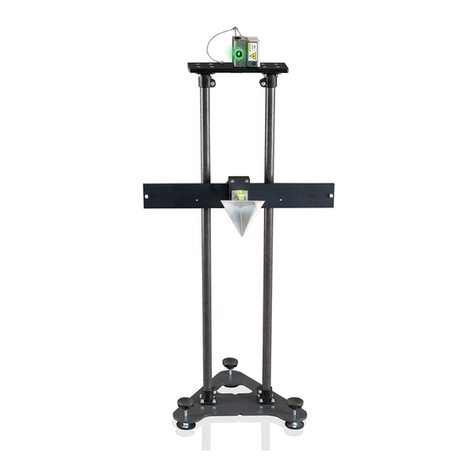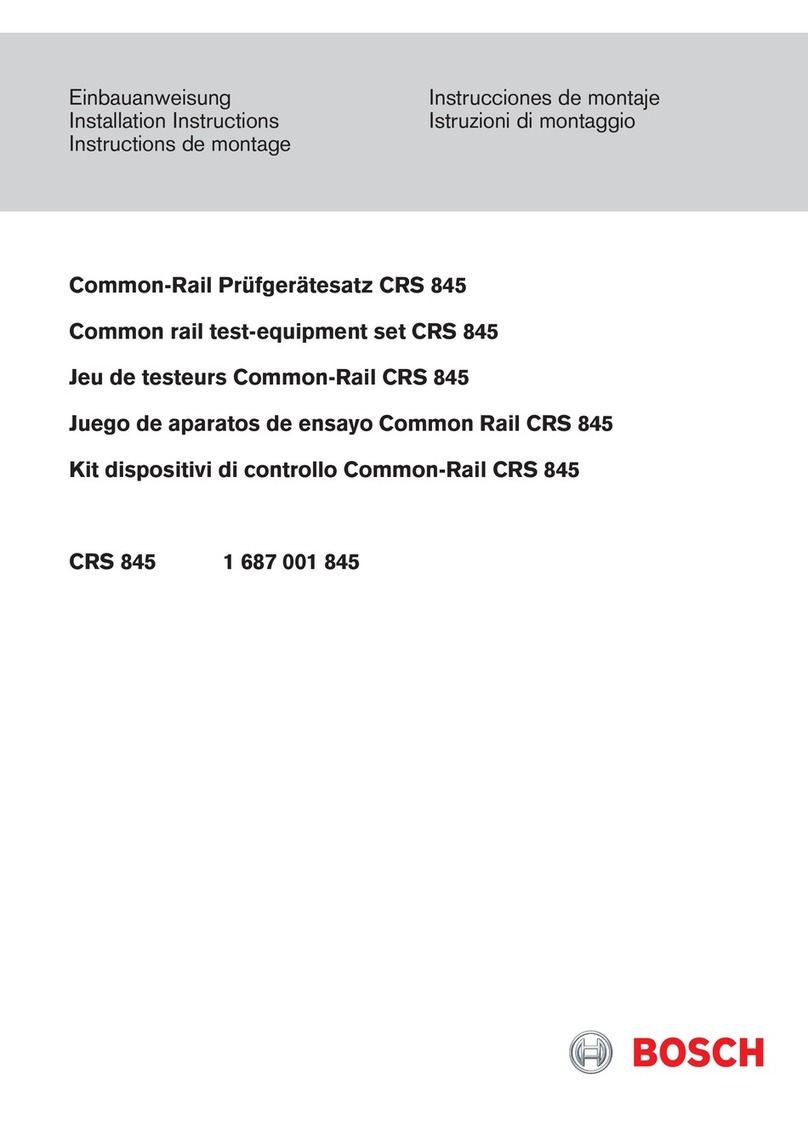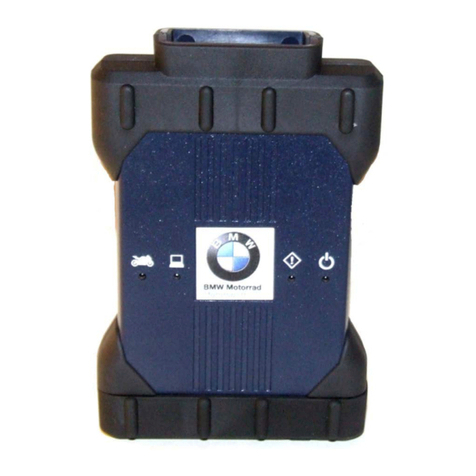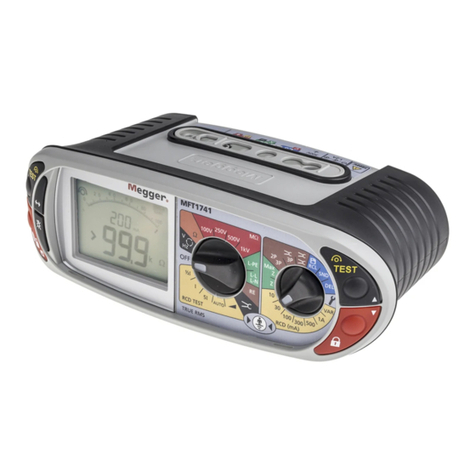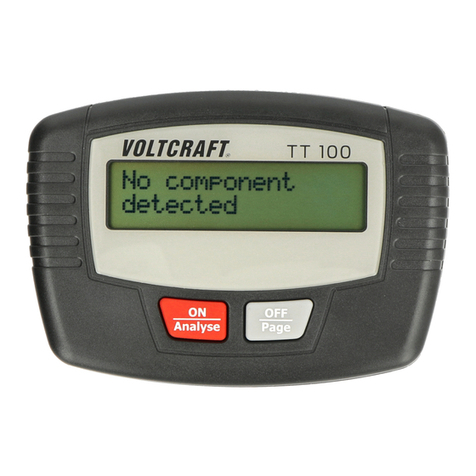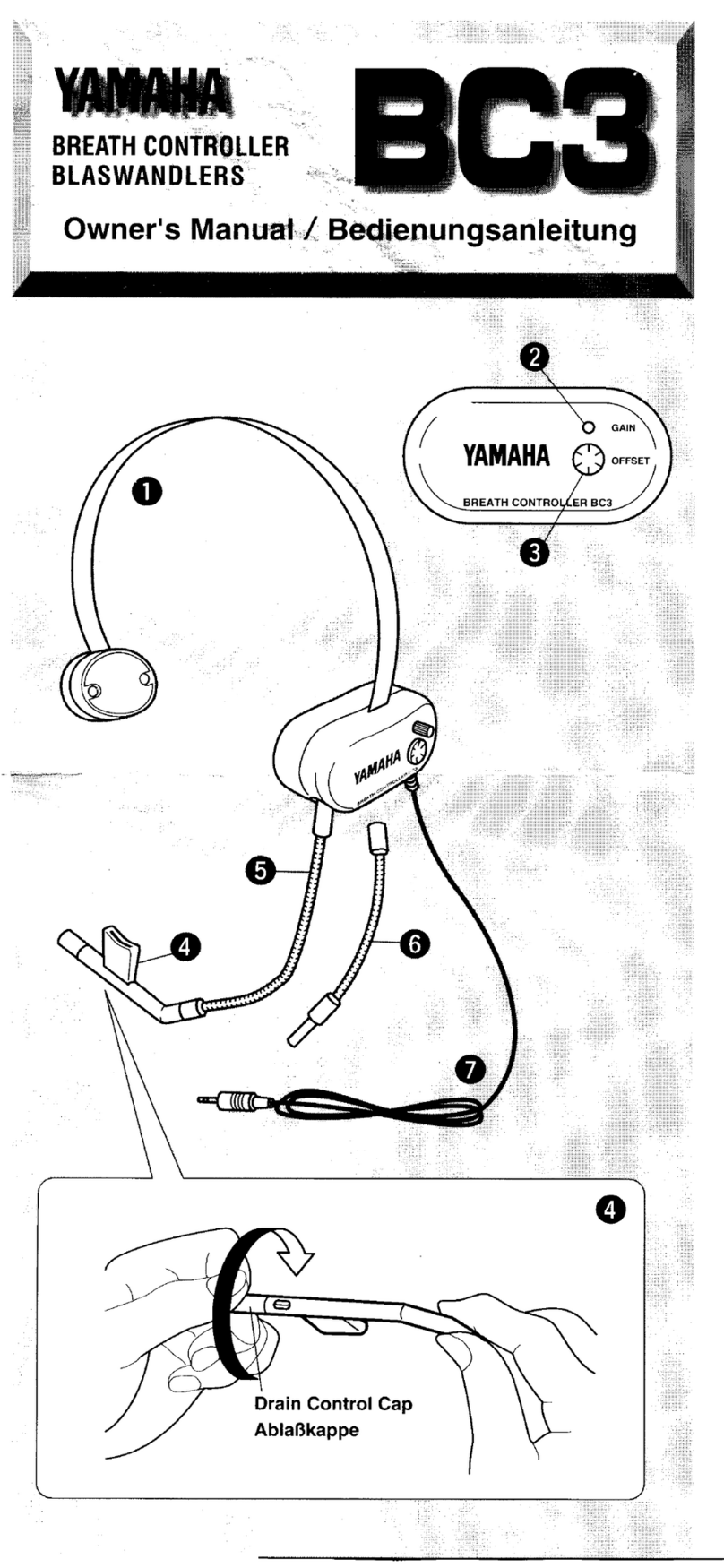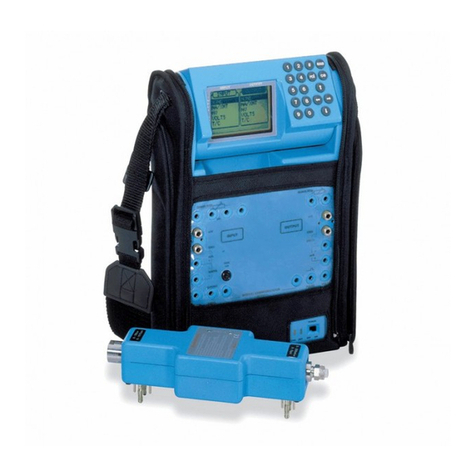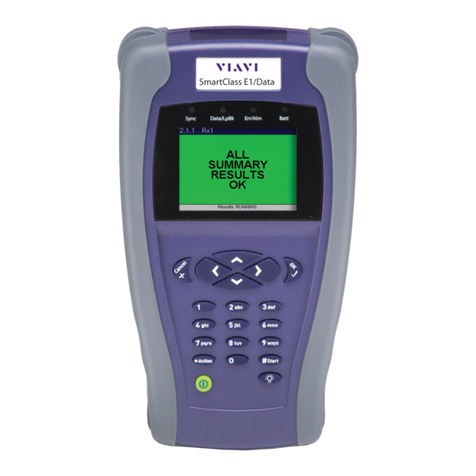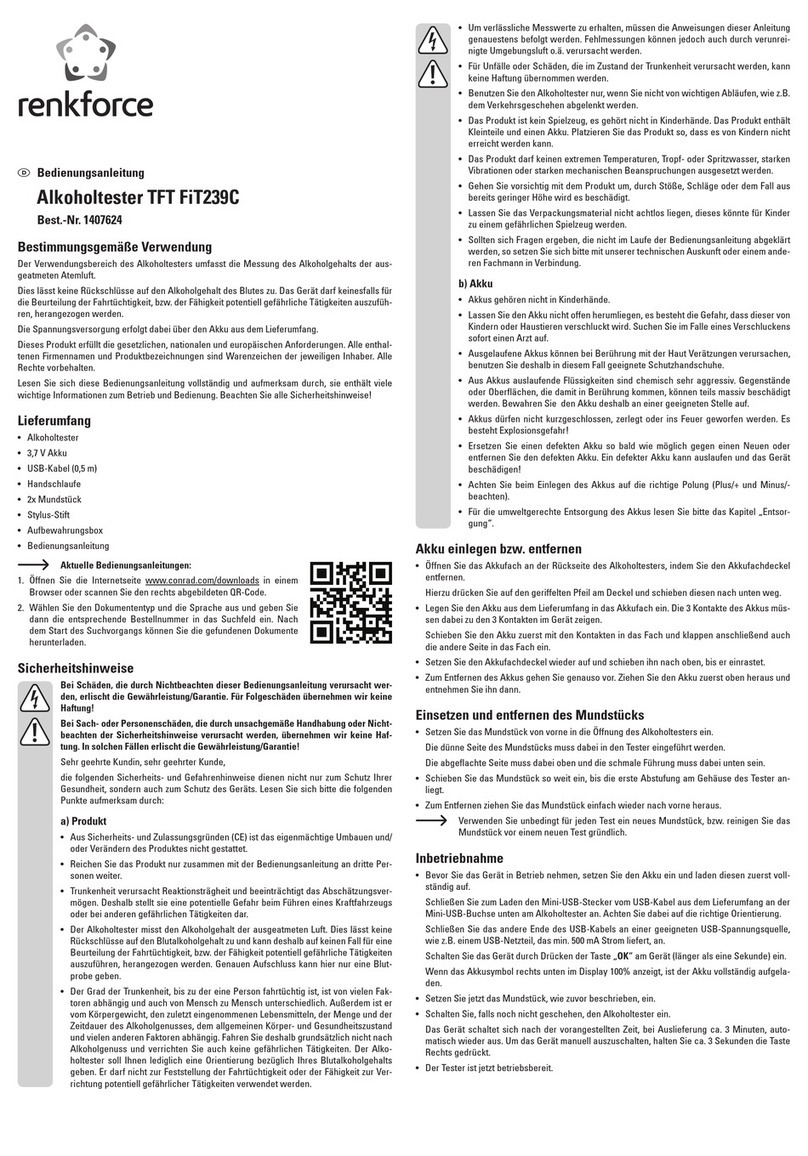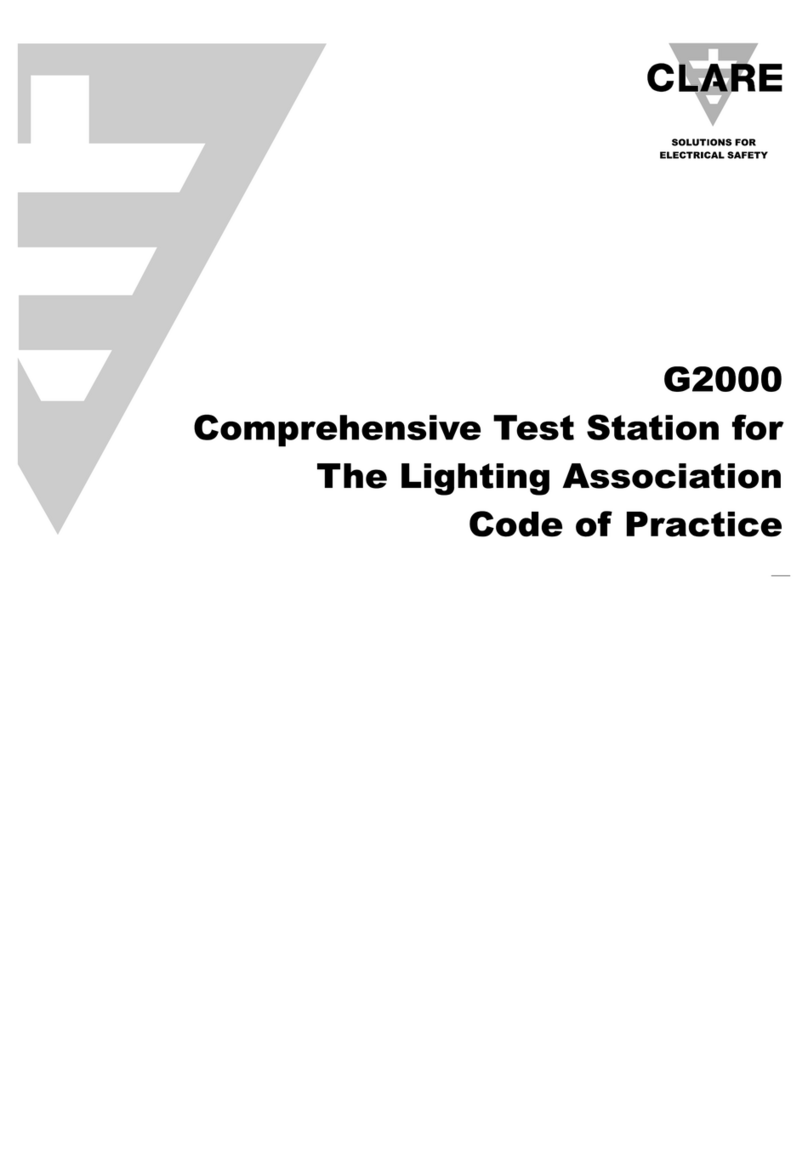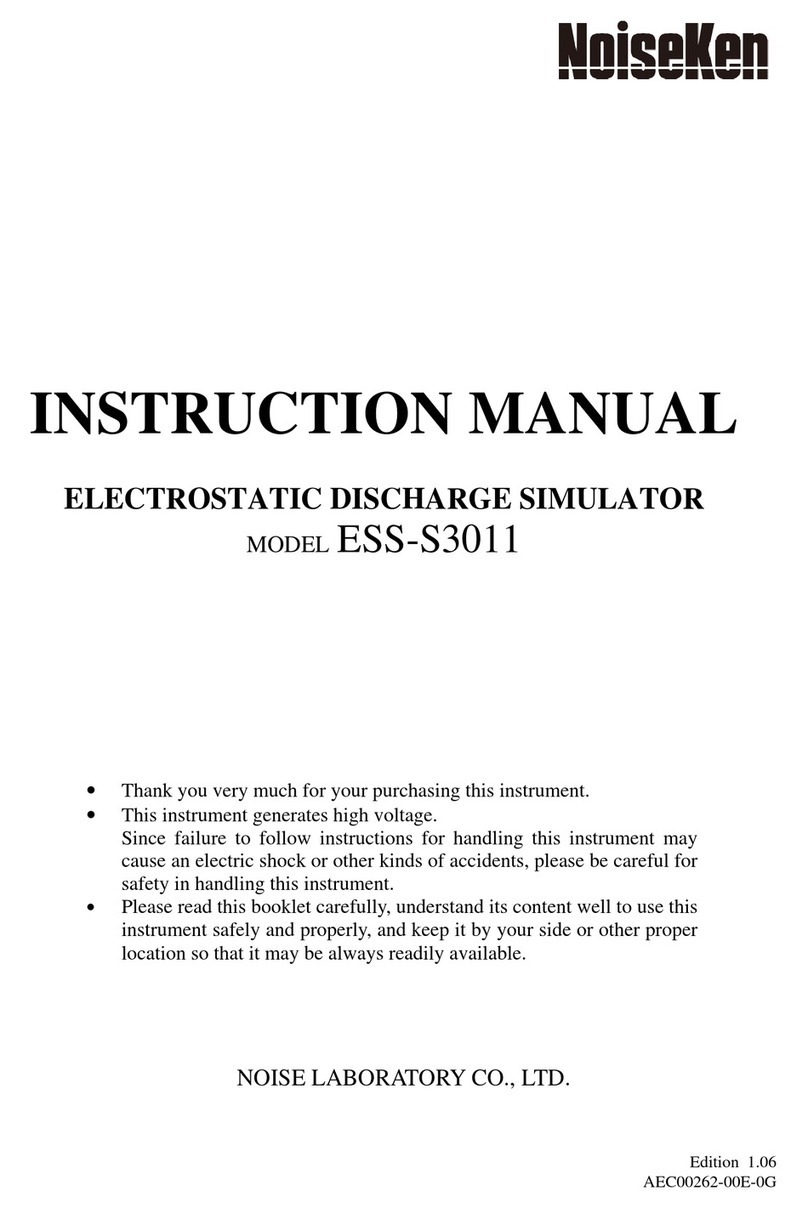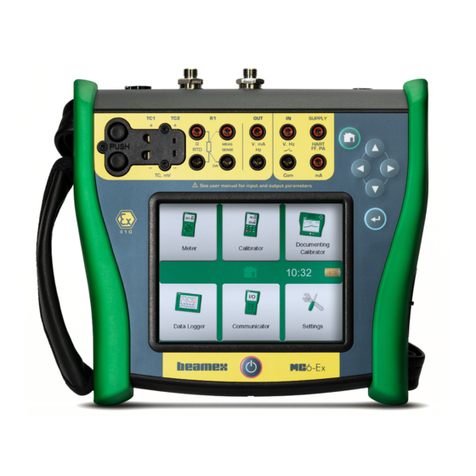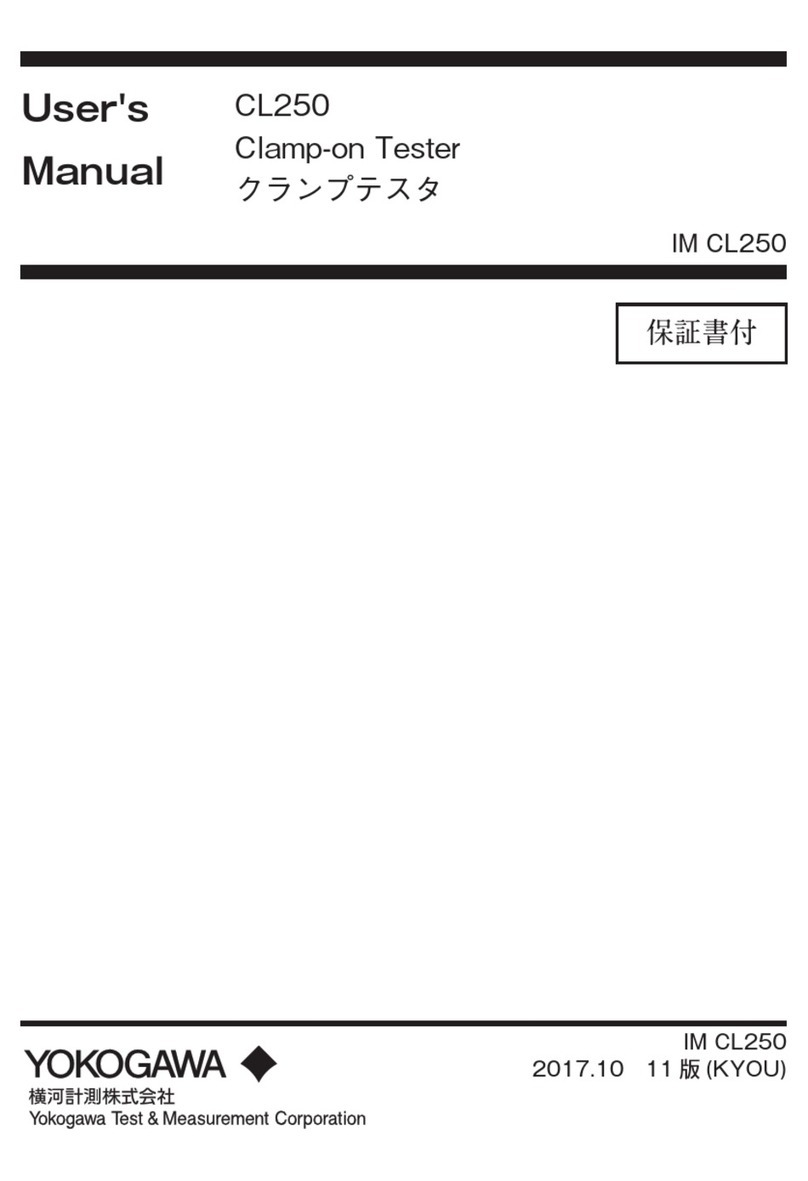
1 689 975 140 2013-07-01|Robert Bosch GmbH
Structure | EPS 807 / 815 | 13 en
3.2 Injection pump test bench
Code Designation Function
B1 Speed sensor Speed sensing
B2 Limit switch Limit switch test oil tank
B3 Sensor Temperature sensor test oil tank
(long)
B4 Speed sensor Speed sensing (Speed monitoring)
B5 Sensor Temperature sensor Inflow
E1 Heating element Test oil heating
E2 Heating element Test oil heating
E3 Heating element Test oil heating
M1 Three-phase motor Drive
M2 Three-phase motor Test oil supply
Y3 Control valve Cooling water regulation
3.3 Lubricating oil supply (Special acces-
sories)
Code Designation Function
M3 Three-phase motor Lubricating oil supply
Q3 Engine protective
circuit
Engine protection Lubricating oil
supply
S8 Pressure tip switch Lubricating oil engine ON
S9 Pressure tip switch Lubricating oil engine OFF
3.4 Switch case
Code Designation Function
A1 Electric module supply Mains module AN 10F
A2 Monitor unit Central module AZ 10
A3 Frequency converter Change straightening module
AW 14/24
A4 Populated PC board Computer card AZ R01
A5 Populated PC board Speed module DZE 800
F2 G-fusible link Safety fuse Secondary wind-
ing 24V/5AT on T2
F3 G-fusible link Safety fuse for secondary
winding +4V/5AT on T2
F4 G-fusible link Safety fuse Secondary wind-
ing 20V/2,5AT on T2
F5 G-fusible link Safety fuse Secondary wind-
ing 28V/2AT on T2
F6 Overload circuit breaker Safety fuse for Stop / Start
12V/7A
F7 Overload circuit breaker Safety fuse for Stop / Start
24V/7A
F8 G-fusible link Safety fuse Secondary wind-
ing 230V/2,5AT on T3
F9 Overload circuit breaker Safety fuse for Test oil heat-
ing
F10 Overload circuit breaker Safety fuse for primary wind-
ing on T2
F11 Overload circuit breaker Safety fuse for primary wind-
ing on T3
F12 Overload circuit breaker Safety fuse for primary wind-
ing on T4
F13 G-fusible link Safety fuse Secondary wind-
ing 100V/5AT on T4
H1 Detecting lamp Converter "ON"
Code Designation Function
H2 Detecting lamp Drive motor "ON"
H3 Detecting lamp Program Test oil heating "ON"
H4 Detecting lamp Lubricating oil engine "ON"
K1 Contactor Program Test oil heating
K2 Contactor Heating protection
Q1 Main switch Mains switch-on
Q2 Engine circuit breaker Engine protector Test oil sup-
ply
S1 Emergency stop switch Emergency shutoff
S2 Pressure tip switch Converter "ON"
S3 Pressure tip switch Converter "OFF"
S4 Pressure tip switch Drive motor "ON"
S5 Pressure tip switch Drive motor "OFF"
S6 Pressure tip switch Program Test oil heating "ON"
S7 Pressure tip switch Program Test oil heating
"OFF"
S8 Pressure tip switch Lubricating oil engine "ON"
S9 Pressure tip switch Lubricating oil engine "OFF"
T2 Control transformer Voltage supply MGT and KMA
T3 Control transformer Voltage supply 230V Socket
T4 Control transformer Voltage supply. 100V in Japa-
nese version
V1 Si Rectifier Voltage supply for Stop / start
magnet
V2 Si Rectifier Voltage supply for Stop / start
magnet
X2 Plug connection Measuring system MGT800 or
KMA 802
X3 Multi-pin socket Connection for PC, screen
and timing lamp
X4 Terminal Stop / Starting magnet -
X5 Terminal Stop / Starting magnet +12V
X6 Terminal Stop / Starting magnet +24V
X7 Plug connection Computer interface drive























